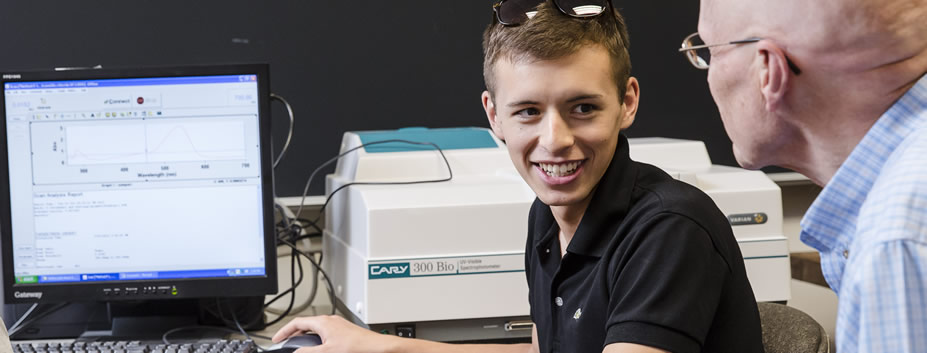SOAR Profile - Alex Huynh
Name: Alex Huynh
Major/minor: Biology
Expected date of graduation: Spring 2014
Hometown: Wind Gap, Pa.
Project title: Defense Dynamics of three Cecropia species of Manu Park, Peru in the context of leaf-cutter ant herbivory
Project advisor: John Bevington
During summer 2013, Alex Huynh participated in a SOAR field research project in one of the most biologically diverse ecosystems on earth – Manu Park, Peru – a location which few students have the opportunity to see and investigate. Considering the national park remains fairly inaccessible by road to this day, just getting there was an accomplishment.
While in South America, Alex examined the herbivore defense mechanisms in myrmecophyte and non-myrmecophyte Cecropia trees, studying how they defended themselves against leaf-cutter ants. Additionally, he compared anthocyanin (herbivore defense chemical) levels in both young and mature leaves of each respective group of trees. During this time, he observed three species of Cecropia trees. In addition to the data collected from the pick-up assay, Huynh collected information to add to his final project reports such as digital photographs, ant nest and plant locations, voucher specimens, and anthocyanin concentration levels in the leaves.
“My interest in the subject was cultivated by papers and talks Bevington gave me on past work on Cecropia, along with his ideas and hypotheses on what might be going on ecologically,” Alex explains. “Also, this Cecropia system provides a clear example of mutualisms and plant defense dynamics, two important concepts in ecology.”
For the most part, the results were expected as Huynh confirmed that anthocyanin concentrations were highest in the non-myrmecophyte species, C. sciadophylla, and that acceptability of C. polystachya disks, a myrmecophyte housing aggressive mutualistic ants, was highest among the species they collected. “This agreed with our initial thoughts since the levels of chemical defense and acceptability to leaf-cutter ants should both be a function of the presence/absence of mutualistic ants,” he says.
It should be noted that, in some key species, anthocyanins levels could not explain his pick-up assay results. Alex concluded that there must be some other chemical factors acting independently of anthocyanin concentrations that must influence acceptability.
Alex plans pursue an honors project involving chemical analysis of tannins found in the leaves he harvested during 2013-2014 school year.

